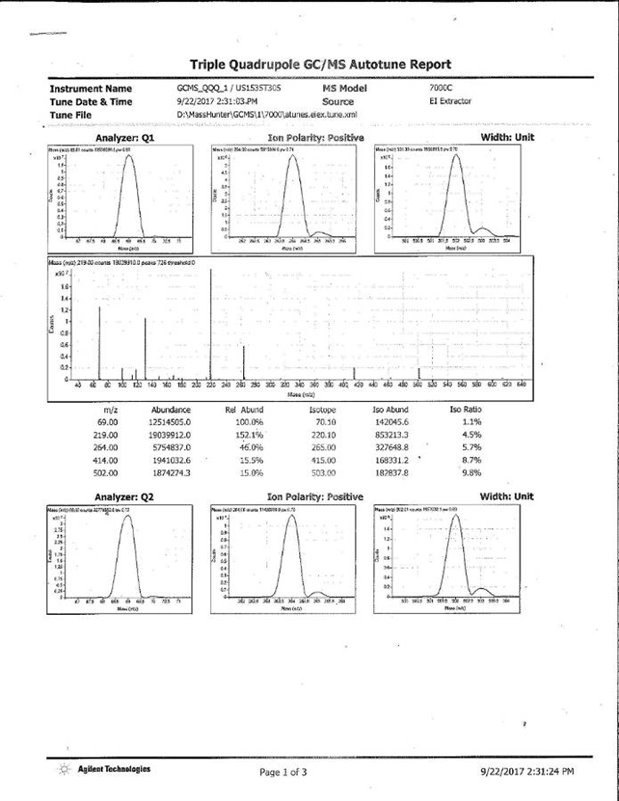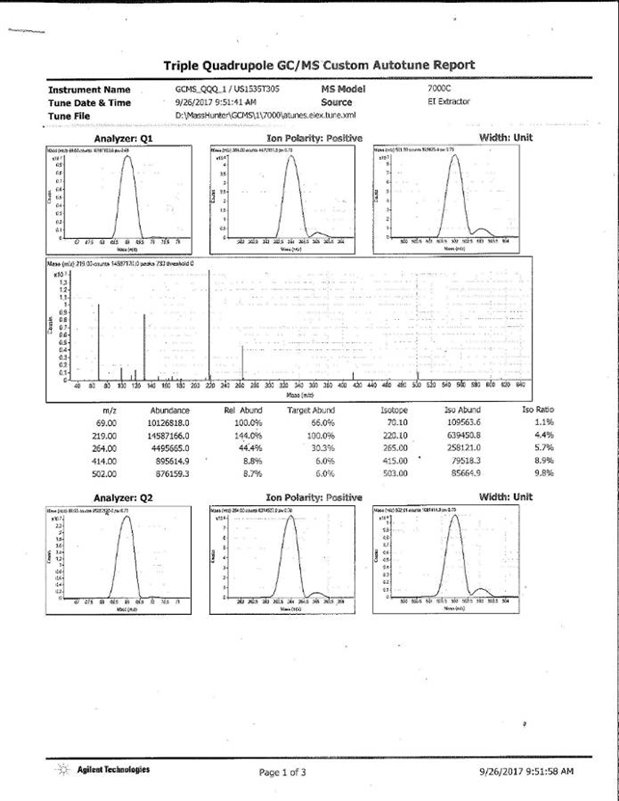We are currently working on running EPA 525.3 (and 625/8270) on our GC-QQQ. Our accrediting organization has said that they will consider it acceptable, as long as we meet all of the QC in the methods. Unfortunately, this includes passing a DFTPP tune check in scan, even though we will be running MRM. While the EPA 625 criteria are not compatible with the autotune results, the EPA 525 criteria are much broader (as they are intended for targeted analysis) and using autotune, the DFTPP check passes about a third of the time.
I've reached out to a couple of the environmental experts at Agilent, but I figured I'd ask the community as well and see if anyone here has any ideas. We only need to be able to pass the tune check on Q1, and it's very close. When it fails, it's only one ion ratio, and only barely, 443 rel to 442 (~26%, limit 15-24%).
One person suggested increasing the threshold in acquisition. I tried everything from 50 to 100000, but it didn't seem to have any effect.
Does anyone know if there is something I can do within Custom/Advanced/Manual tune to improve just that ion ratio? I'm not comfortable enough with the function within advanced or manual to want to start playing around.


